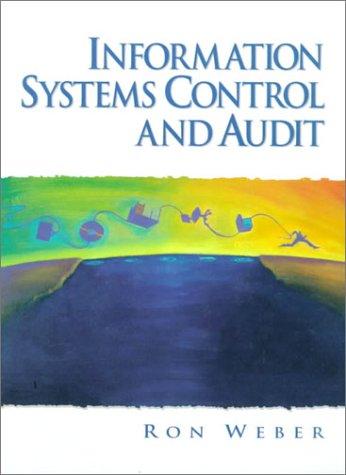You are an auditor examining the data-entry process for a large Torontobased mail-order retail firm that dispatches
Question:
You are an auditor examining the data-entry process for a large Torontobased mail-order retail firm that dispatches goods to customers on behalf of about 30 clients. You are currently focusing on two error types that can occur: (1) the data-entry clerk can enter a wrong amount ordered for an order placed by a customer and (2) the data-entry clerk can enter a wrong product code for an order placed by a customer. Sometimes the first error will be identified by a reasonableness check exercised by the program. Sometimes the second error will be identified by a product-code check digit, although not all product codes have check digits. Moreover, sometimes the wrong product code might still be a valid product code anyway.
In light of evidence you collect during interviews and examination of documentation on the likelihood of the data-entry clerk making these errors, the errors being discovered by the controls, and the errors then being corrected properly by the data-entry clerk, you prepare the following table:
\[\begin{aligned} & p_{1} \quad=.7 \quad p_{2}=.85 \\ & P\left(e_{11}\right)=.8 \quad P\left(e_{21}\right)=.9 \\ & P\left(c_{11}\right)=.9 \quad P\left(c_{21}\right)=.95 \\ & P\left(e_{12}\right)=.75 \quad P\left(e_{22}\right)=.8 \\ & P\left(c_{12}\right)=.6 \quad P\left(c_{22}\right)=.75 \end{aligned}\]
Required: Using the engineering reliability formulas provided in the chapter, calculate the reliability of the input program in relation to these two errors. What do you conclude about the reliability of the program? How would you now proceed with the audit in light of your conclusions about the reliability of the program?
Step by Step Answer:






